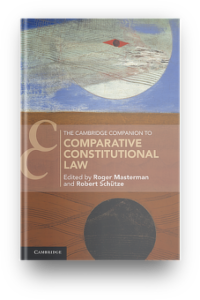‘Separation of powers’ is a concept that is much used, much criticized, but rarely reflected on in contemporary comparative constitutional law. 1 Before it can be discussed properly, we have to elaborate some basic distinctions. Separation of powers can be used as a shorthand description of the organization of government as a whole. Political scientists and lawyers have widely applied the notion in this way even though there is nothing distinctively normative about it. The concept can also serve as a legal argument in constitutional reasoning. Both uses are not mutually exclusive; even though the fi rst does not refer to a normative concept, it seems to be helpful for constitutional lawyers who want to analyse the organizational structure of governments. The second one might also help non- legal researchers to understand one important element of constitutional reasoning and both uses can be intertwined on different levels. The legal argument strives to guarantee a certain organization of government, and it is applied by institutions, namely by courts, which are part of this organization. In the academic debate, both uses are often combined. Especially in the American realist tradition, legal arguments are connected with institutional analyses. 2 This is fine, but it should be ensured that the argument remains clear about its claims and keeps both levels not necessarily separated, but distinct. As long as there is a methodological difference between ‘comparative constitutional law’ and ‘comparative government’, this distinction will play a role. 3
1 At least compared to literature on rights, federalism and constitutional review, but see:
D. Kyritsis , Where Our Protection Lies ( Oxford University Press , 2017 ) ; J.S. Martinez ,
‘ Horizontal Structuring ’, in M. Rosenfeld and A. Saj ó (eds.), The Oxford Handbook of
Comparative Constitutional Law ( Oxford University Press , 2012 ), 547 – 575 ; A. Kavanagh ,
‘ The Constitutional Separation of Powers ’, in D. Dyzenhaus and M. Thorburn (eds.),
Philosophical Foundations of Constitutional Law ( Oxford University Press , 2016 ), 221 –
239 ; C. Saunders , ‘ Theoretical Underpinnings of Separation of Powers ’, in G. Jacobsohn
and M. Schor (eds.), Comparative Constitutional Theory ( Edward Elgar , 2018 ), 66 – 85 ; C.
M ö llers , The Three Branches , ( Oxford University Press , 2013 ) .
2 B. Ackerman , ‘ New Separation of Powers ’ (2000) 113 Harvard Law Review 633 – 729 .
3 The question if there is a difference is obviously contested: R. Hirschl , Comparative Matters
( Oxford University Press , 2014 ) ; A. von Bogdandy , ‘ Comparative Constitutional Law as a
Social Science? A Hegelian Reaction to Ran Hirschl’s Comparative Matters ’ (2016) 55
Der Staat 103 – 115 ; C. M ö llers and H. Birkenkoetter , ‘ Towards A New Conceptualism in
Comparative Constitutional Law, or Reviving the German Tradition of the Lehrbuch ’
(2015) 12 International Journal of Constitutional Law 603 – 625 .
